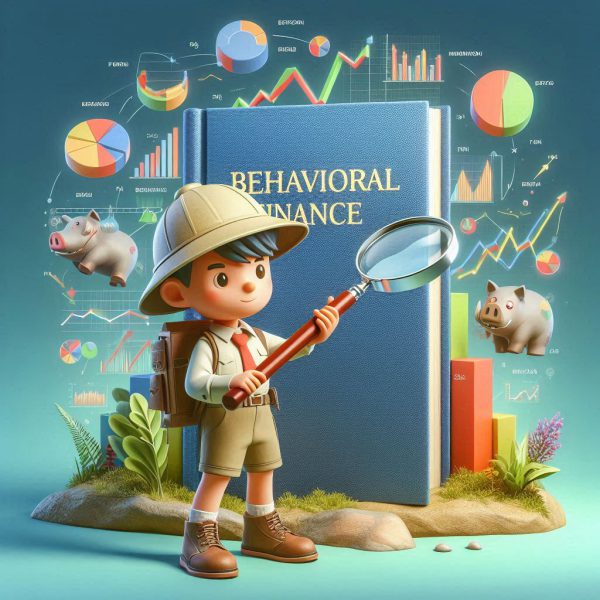
Sep 4, 2024
Understanding Present Bias Meaning
Present bias refers to the tendency of individuals to prioritize immediate rewards over future gains, often leading to suboptimal decision-making. This cognitive bias is particularly relevant in economics and behavioural finance, where understanding the motivations behind investment choices can significantly influence outcomes. The implications of present bias are profound, affecting everything from individual savings behaviour to broader market dynamics. As investors often seek immediate gratification, they may overlook long-term opportunities in favour of short-term gains.
The Role of Mass Psychology in Investment Decisions
Mass psychology is critical in shaping market behaviour, particularly in how investors respond to present bias. Investors’ collective mindset can lead to herd behaviour, where individuals make decisions based on the actions of others rather than their analysis. This phenomenon can exacerbate present bias, as fear of missing out (FOMO) or the desire to conform can drive investors to chase after fleeting opportunities.
Warren Buffett famously noted, “The stock market is designed to transfer money from the Active to the Patient.” This statement reflects the importance of resisting the impulse for immediate rewards. During market volatility, many investors succumb to present bias, selling off assets in a panic rather than holding onto them for long-term growth. In contrast, those with a long-term perspective are better positioned to capitalize on future gains.
Technical Analysis: A Tool for Recognizing Present Bias
Technical analysis provides investors with tools to identify patterns and trends in stock prices, which can help mitigate the effects of present bias. By focusing on historical price movements and trading volumes, investors can make more informed decisions that align with long-term goals rather than succumb to short-term impulses. Technical indicators such as moving averages can help smooth out price fluctuations, providing a clearer picture of a stock’s potential.
Peter Lynch, a renowned investor, advocated for understanding a company’s fundamentals before making investment decisions. He stated, “Know what you own and why you own it.” By applying technical and fundamental analysis, investors can better navigate the noise often created by present bias. For instance, if a stock shows a positive trend in its moving average while the broader market experiences volatility, this may signal that the stock is a long-term hold, despite short-term fluctuations.
Cognitive Bias and Its Impact on Decision-Making
Cognitive bias encompasses various systematic patterns of deviation from norm or rationality in judgment. Present bias is just one example of how cognitive biases influence investment decisions. Investors often overvalue immediate rewards while undervaluing future benefits, leading them to make choices that may not be in their best interests. For example, investors might choose to sell a stock after a minor gain rather than holding it for a much more significant potential increase over time.
George Soros, the founder of Soros Fund Management, emphasized the importance of recognizing one’s biases in investment decisions. He stated, “It’s not whether you are right or wrong that’s important, but how much money you make when you are right and how much you lose when you are wrong.” This highlights the necessity of overcoming present bias to achieve long-term success. By acknowledging cognitive biases, investors can adopt a more disciplined approach to their investment strategies.
Examples of Present Bias in Action
One illustrative example of present bias can be seen in the behaviour of retail investors during market rallies. Many investors feel compelled to jump in when stock prices rise rapidly, often buying at inflated prices due to the fear of missing out on immediate gains. This can lead to a cycle of buying high and selling low, ultimately undermining long-term investment goals.
Another example is the tendency for individuals to prioritize immediate consumption over savings. Many people spend their money on luxuries today rather than investing it for future growth. Benjamin Graham, the father of value investing, said, “The investor’s chief problem—and even his worst enemy—is likely to be himself.” This self-sabotage is often driven by present bias, as individuals fail to recognize the long-term benefits of disciplined saving and investing.
The Influence of Expert Commentary on Investment Behavior
Expert commentary can shape how investors perceive present bias and its implications for their decision-making. John Templeton, a legendary investor, believed that “the four most expensive words in the English language are ‘this time it’s different.’” This cautionary note reminds investors that past patterns of behavior, including present bias, often repeat themselves. Investors must remain vigilant and resist the urge to chase after trends that promise immediate rewards.
Similarly, Carl Icahn has often emphasized the importance of a long-term outlook in investing. He stated, “You must have a philosophy of investing in a market. You can’t just look at prices.” This philosophy encourages investors to look beyond short-term fluctuations and assess the potential for long-term growth, thereby mitigating the effects of present bias.
Strategies to Counteract Present Bias
Investors can adopt several strategies to effectively counteract present bias. One approach is to establish clear long-term financial goals, which can help individuals remain focused on future rewards rather than succumb to the allure of immediate gratification. Setting aside funds for long-term investments in a separate account can also create a mental barrier against impulsive spending.
Ray Dalio, founder of Bridgewater Associates, advocates for a systematic approach to investing. He emphasizes the need for a diversified portfolio and a clear understanding of risk. By focusing on the bigger picture, investors can reduce the likelihood of falling prey to present bias, allowing them to make decisions that align with their long-term objectives.
Understanding the Long-Term Value of Patience
Patience is a virtue that often pays off in the investment arena. Jesse Livermore, a legendary trader, famously stated, “It is not whether you are right or wrong that is important, but how much money you make when you are right and how much you lose when you are wrong.” This underscores the importance of waiting for the right opportunities rather than impulsively reacting to market fluctuations.
John Bogle, founder of Vanguard Group, championed the benefits of index investing and long-term strategies. He argued that “time is your friend; impulse is your enemy.” This wisdom reminds us that remaining patient and committed to a long-term investment strategy can yield better results than chasing short-term gains.
Conclusion: Embracing a Long-Term Mindset
In summary, present bias is a fundamental concept influencing investment behaviour and decision-making. By understanding the psychological factors at play, including mass psychology and cognitive biases, investors can develop strategies to mitigate the impact of present bias. The insights of esteemed investors like Warren Buffett, Peter Lynch, and Ray Dalio provide valuable guidance in navigating the complexities of investment choices.
Ultimately, embracing a long-term mindset is crucial for overcoming present bias. By focusing on future rewards and remaining disciplined in investment strategies, individuals can position themselves for success in the financial markets. Through patience, analysis, and a commitment to understanding market dynamics and personal biases, investors can achieve their financial goals and thrive in their investment journeys.










